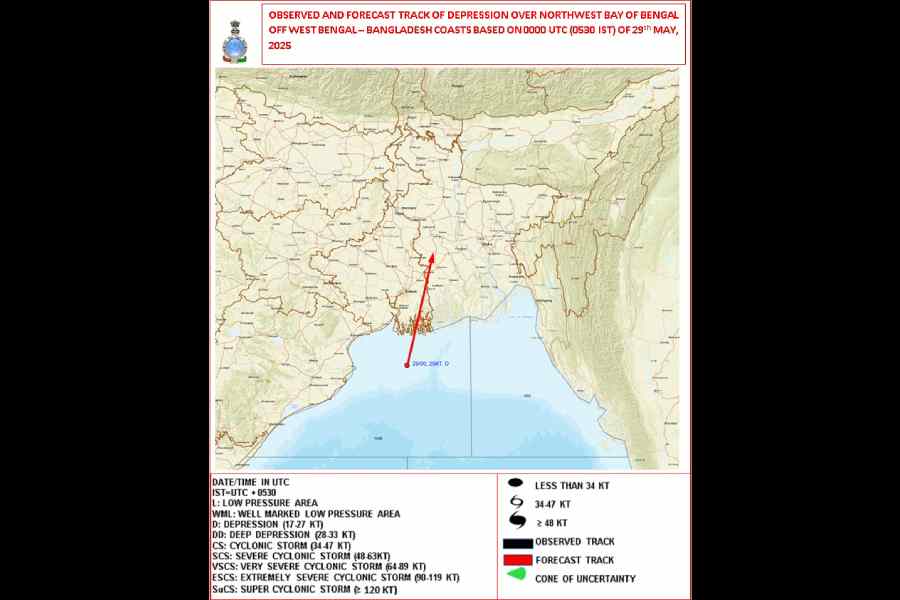 |
| Deepor Beel: ‘The professional ornithologists’ paradise’ |
It had been a somewhat misleading piece of information in the media that induced us to make a recent trip to Deepor Beel, touted as the closest spot to Guwahati which welcomes our avian brethren from distant lands. Migratory birds were flocking to that waterbody, the news item had said. So we could, though not literally, kill two birds with one stone — spend a day away from the noise and dust of the city while doing a bit of exotic bird-watching!
First, naturally, we did some homework which in today’s context implies delving into the boundless depths of the Internet to cull “knowledge”. Apart from being a pristine spot, we were authoritatively told, this permanent fresh-water lake in a former channel of the Brahmaputra had been declared in November 2002 as a Ramsar Site for undertaking conservation measures considering its ecological importance. Apparently, fed by two meanders called Basishta and Kalmani, as well as local monsoon run-offs, the beel serves as a natural stormwater reservoir during the rainy spell for Guwahati.
Our informant also listed an impressive array of floral and faunal wealth cached by the perennial water spread spanning about 10 square kilometres, with the wetland and surrounding area enlarging the “Deepor Beel Sanctuary” to around 42 square kilometres.
It harboured a wide range of aquatic flora, including 18 genera of plankton, as also over 50 species of commercially-viable species of fish, it was claimed. Along with 20 amphibian species, 12 lizards, 18 snakes and six turtles and tortoises, not to mention the quadruped inhabitants that included elephants, leopards, jungle cats, barking deer, porcupines and sambhar, the sanctuary appeared to be an ecological treasure trove indeed.
But it was birds that we had gone there to see, and birds that we would be on the lookout for! According to one source in the Internet, the range of avian species to be had in winter was no less impressive — 219 species of birds, including more than 70 migratory species. Apparently, some of these, including the spot-billed pelican, lesser adjutant stork, Baer’s pochard, Pallas’s sea eagle, greater adjutant stork etc. were endangered, while among those which periodically came a calling from other parts of the world was listed the Siberian crane. Deepor Beel as far as the Internet was concerned was the professional ornithologists’ paradise, and even had amateur bird-watchers like us smacking our lips in anticipation.
A knowledgeable friend had warned us that thick mist surrounded the beel well into the morning, so it was no use setting off too early. Being just a half-hour drive away, we decided on 9am to be the most propitious time for departure and, having packed a picnic lunch of sandwiches, left at that hour. Apart from some short patches the road in its entirety was pretty good, which was a blessing. However, what perplexed us was the heavy movement of trucks on a road that was supposed to take us away from the city into pristine hinterland.
A part of the answer was soon visible in the form of unimaginably huge scars on the hillsides through which the road ran. Like in Kaziranga, this “sanctuary” also appeared to contain rock-quarries that serve to disfigure the landscape and cause ecological degradation. We were surprised that quarries, along with earth-cutting as also brick-kilns, are allowed to continue to operate despite the declaration of Deepor Beel as a Ramsar Site.
Equally worrying was the flurry of construction activities, mostly of mammoth industrial, educational or residential complexes, that were going on almost up to the periphery of the waterbody. Standing on the bank of Deepor Beel, we were overwhelmed with the sentience of being hemmed in from all sides not by the beautiful, dark-green hills, but by the proliferation of human settlements. Despite its relatively wide dimension, the waterbody appeared to us to be tragically vulnerable, an aqueous morsel eternally in danger of being swallowed up by rapacious humans. The ominously closing in buildings of Guwahati could be seen on the skyline, as also smoke rising from tall, industrial chimneys.
Having visited lakes in different parts of the country and elsewhere, we could with confidence claim that the banks of the Deepor Beel were the drabbest we had ever seen. The small complex containing the watchtower was stranger to a single flower, of the wild or home-grown variety, despite this being the season for some flowers to bloom. Just near the tiny lodgings of the forest department boatmen stood a decrepit, neglected structure — it had been, we were told, constructed by a government agency as a community centre, but the budgeted money had run out before it could be completed, so the said agency had left it incomplete to remain an eternal symbol of government inefficiency and extravagance. Well, not exactly eternal, for the roof was already in the process of falling off and the walls were sure to crumble given a storm or two!
Perhaps the drabness of the bank, as also the absolute absence of any tourism infrastructure, was deliberate, the authorities not wishing to lure tourists who might disturb the fragile ecosystem as well as the quietude. Quietude, did we say? Well, even as we stood on the bank the so called quietude, periodically disturbed by the sound of trucks and other vehicles on the road, was violently shattered by a train engine as it roared back and forth over a bridge that passes over one wing of the beel. The railway authorities, in their wisdom, had thought it meet to build the Kamakhya-Jogighopa railway track to follow the fringes of the beel. On this particular day, the track at that point was being repaired, which explained the constant to and fro passing of that infernal engine!
No self-respecting bird, domestic or foreign, would opt to live within such a noisy ambience, we thought! The two-hour boatride we took proved us right. Not even a dozen of the mythical 219 avian species was to be seen, news item in the media notwithstanding. The few sighted included the ubiquitous cattle-egret, herons and gulls, some snake-necked cormorants, swifts and swallows, a solitary lesser adjutant stork and a host of kites and hawks filling up the sky overhead. Our boatman said that a group of pelicans had landed a few days earlier, but after scouring the beel from one end to the other, failed to locate them. The fact which worried us most was the absolute absence of vultures, a familiar presence in other wildlife “sanctuaries” of this region. Till some years back, they had been present in Deepor Beel too, our boatman told us. But eating the carcass of domestic cattle which had been poisoned wiped out the entire group and today not a single vulture remains.
And did we mention the desire of the authorities to try and preserve the fragile ecosystem? Well, apart from being a stormwater reservoir, Deepor Beel also appears to be a reservoir for effluent discharged by much of the city, especially its industries, which explains the dirty, brackish look of the contents of what is claimed to be a freshwater lake. The impact such pollution has made on the aquatic flora and piscine species is anybody’s guess. To add salt to the wound, the Guwahati Municipal Corporation has chosen one side of Deepor Beel at Paschim Boragaon area to dump the city’s waste. Along with siltation due to quarrying and earth-cutting, shrinkage because government-approved allotment of land on the lake’s periphery and poaching, the list of woes of this Ramsar Site are long indeed!
If we recall correctly, the Assam Assembly in 2008 had passed the Guwahati Water Bodies (Preservation and Conservation) Bill which sought to preserve beels around the premier city of Assam, primarily to save it from artificial floods and waterlogging. The government had also set up a multicrore-rupee fund to reacquire private land around Deepor Beel to prevent further encroachment, while the Union ministry for environment and forests has chipped in with cash from time to time for ameliorative measures associated with this vital waterbody. As we returned, somewhat earlier than we had planned, from our trip to Deepor Beel, we could not help but wonder as to what happened to all that money, as well as the political will.










